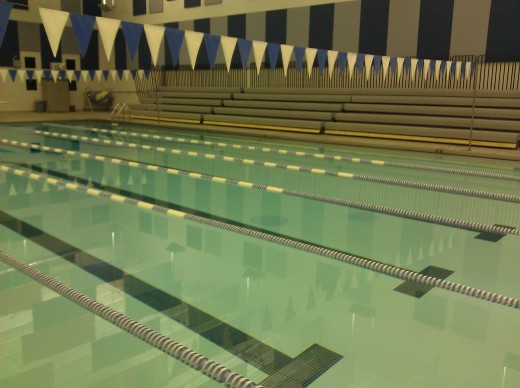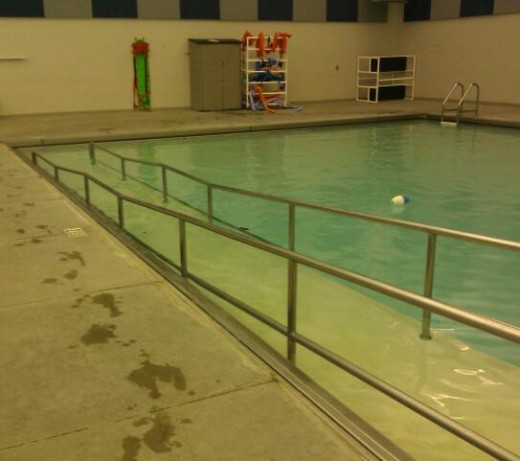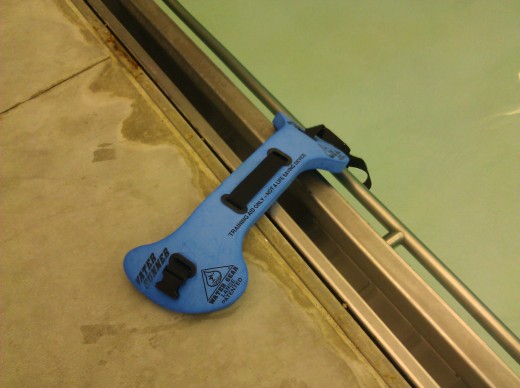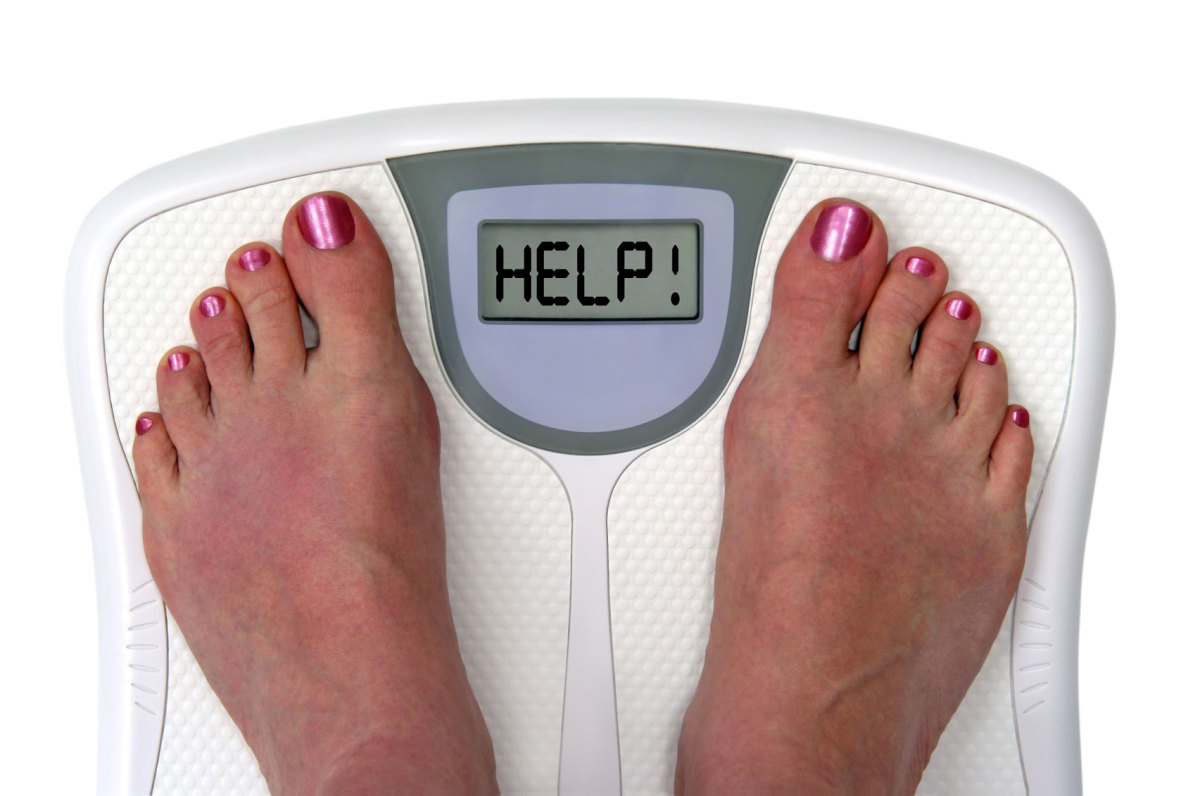Water Workout for Weight Loss and Managing PTSD

Where It All Began
Although I first began my water fitness routine near the dawn of a new year, the original resolution wasn’t for a new year. In fact, it may not have qualified as a resolution at all. I started swimming (and working out again in general) in response to a most beautiful and generous Christmas gift from my parents in 2006. I had been in and out of the hospital for several months, trying to deal with the severe depression and generalized anxiety that have now been both diagnosed and successfully treated as post-traumatic stress disorder (PTSD). The gift was a six-month membership to our local YMCA, and I took full advantage of it—riding stationary bikes, swimming, going to water aerobics classes, attending the occasional yoga or zumba class. For the next few birthday and Christmas gifts, my parents extended my gym membership. Later, I took over payments on my own.
Variations in medications and the accompanying variations in my metabolism kept me from always seeing the kind of weight loss I may have wished for as I worked out for the first couple of years. I did, however, manage to lose some weight, and the muscle tone and other health benefits, including an improved overall mental outlook, made working out worth my while. I developed a rhythm of working out in the swimming pool four or five nights a week. Usually this translated into swimming four or five laps followed by 45 minutes or so of water aerobics, a soak in the hot tub, then another lap or two to cool off and round out my gym time.
Even during times when the medications I took blocked the “runner’s high” on which many casual athletes rely to get them through a workout, the confidence and strength I created in myself was worthwhile. In particular, many people have been surprised at my upper body strength since I have been swimming and training in the water on a regular basis.

Time for a True Resolution
The one thing constant in life is change, and one of the difficulties for me is finding a way to adjust my “all or nothing” attitude to fit my realities. 2011 was particularly full of change for me. I got married. I moved. I changed jobs three times. In the midst of all this change, my routine of getting to the gym for a couple of hours several nights a week was disrupted. Swimming fell into the “if I have time for it” category, and it was difficult for me to bother even showing up at the gym if I knew there wouldn’t be time for my full workout routine. As my life changed and my pocketbook fell out of shape, so did my fitness.
Happy in my new marriage, I, like many newlyweds, also began to pack on the pounds. Then the day came when both my new spouse and I were jobless, and we had to let our fully paid gym membership expire.
Contented, fat and sassy as I was, I began to feel uncomfortable with the new weight. I began searching for a way to get back into the swimming pool.
The YMCA has a long-standing tradition of helping those in need, so my spouse and I plucked up our courage and popped in for a visit with the local manager. First, he set us up with a free week to use the facilities. At the end of the week, we sat down with him again, crunched the numbers, and found an affordable plan that would enable us to use the local facilities until our financial situation improves.

What About You?
Do you participate in a regular workout routine?
The Process
One week before Christmas, I put the brakes on weight gain, squeezed back into my swimming suit, and hit the lap lanes again.
I’ll be the first to admit I am not a great swimmer. I enjoy it tremendously, but some of my PTSD issues make me reticent to stick my face into the water when swimming in an indoor pool. I frequently use a sidestroke or backstroke or simply cheat by keeping my head up while swimming the breaststroke. The sensation of the water surrounding my body as I swim comforts and grounds me, and I am able to work toward my fitness goals easier here than in aerobics classes or other venues where joint strain can become an issue.
The first couple of days back in the pool had me lamenting my negligence of the past few months. Most notably, my arm strength had diminished significantly. In addition, the lap lanes at the new gym are significantly cooler than those at the place where I used to swim. That will take a little adjustment, especially since my physique isn’t quite ready to handle the respiration necessary to swim and breathe at the same time in such chilly depths. Fortunately a warmer, shallow pool is available nearby. Thus far I have spent the larger portion of my time with or without a water fitness belt doing my exercise routine as adapted for a sub-tropical climate.
The current plan is to get myself into the swimming pool a minimum of four days a week, every week this year. My employment transitions are still uncertain, so I am leaving times undefined as of yet. The ultimate goal is to spend more time in the lap lanes and less time in the warmer pool as the year progresses. For me, this is because I tend to work out harder when the water is cooler, whether I am using a water fitness belt or swimming laps on my own. Also, I tend to get too warm when exerting myself, so the cooler water will encourage me to work harder, burn more calories and develop better muscle mass than I would in the warmer swimming pool.

Virtues of Water Fitness
Water is my chosen workout venue for a number of reasons. Primarily, water is a place where I find strength and freedom.
I learned to swim as a young child in a Red Cross program at the local YMCA. In subsequent summers, I spent hours every week at the local swimming pool. When I was a child, walking was most always painful for me. Swimming seldom was. What freedom I found when I could keep up with other kids my age! Although I had never been able to run away, I was certainly able to swim away. I could swim up, down, across, even sideways! When I wanted to socialize, I could play with other children at shark or Marco Polo. When I tired of their games, I could swim off to other sunny shores or to the bottom of the pool for a few seconds of R and R before surfacing several yards away from their worn-out play.
Today swimming provides a way for me to burn calories without taxing arthritic joints. On days when even low-impact activities send pain jolting through my body, a deep-water aerobics class is usually manageable. On better days, I can still get a more effective workout (both aerobic and anaerobic) in the water than on dry ground.
Recommendations from the Experts
Although I began my foray into water fitness before I explored Dialectical Behavior Therapy (DBT) for my PTSD, water fitness works well for helping to ground individuals who suffer from PTSD, Borderline Personality Disorder, and emotional dysregulation. Additionally, water fitness is recommended for those with arthritis, fibromyalgia and other chronic pain conditions. Even athletes who don't suffer from any of these conditions find that water fitness is an effective way to build muscle and endurance. If you need to get fit, I definitely recommend taking a dip at your local Y or community center.









